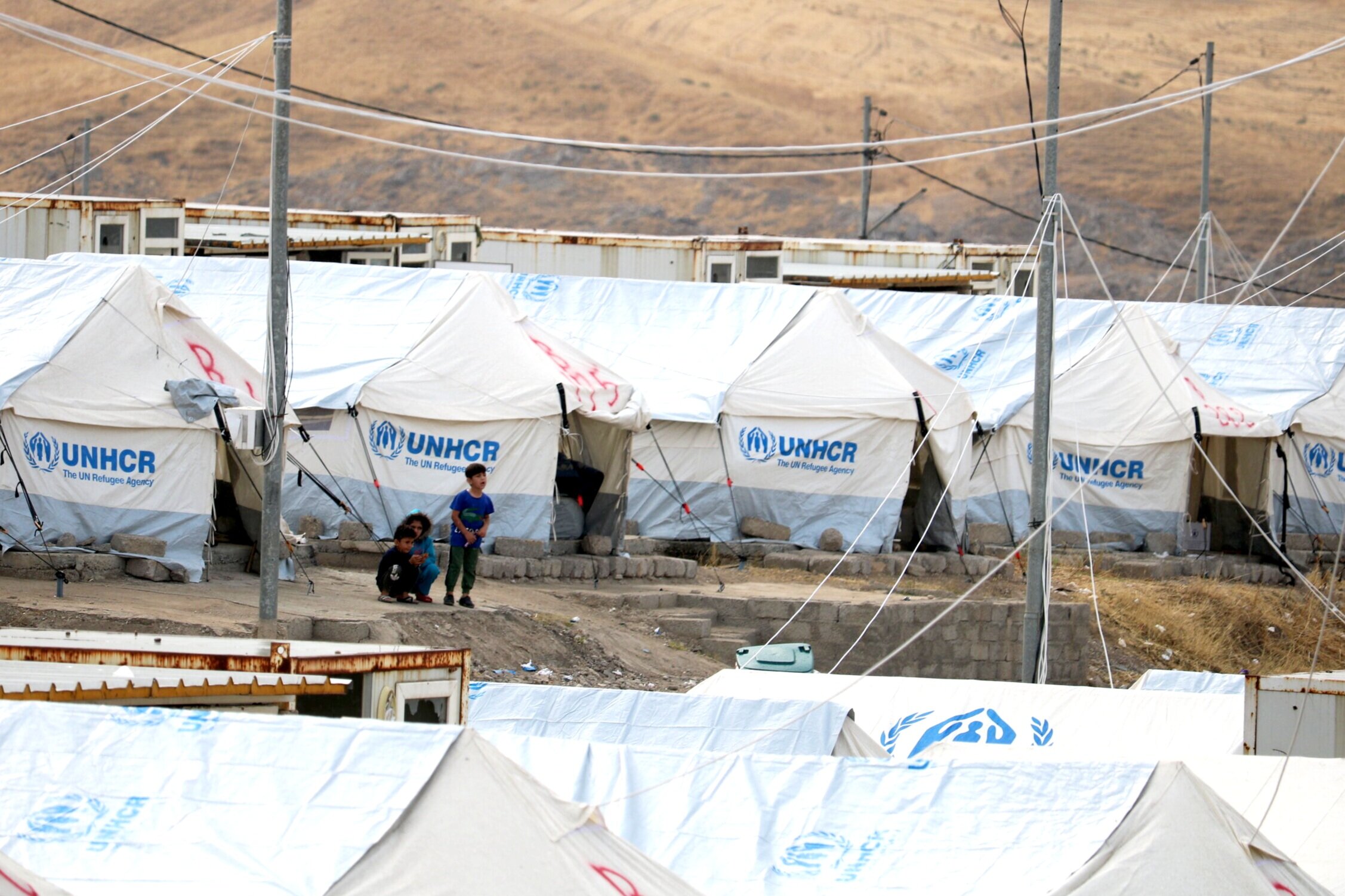June 20th is noted each year as a commemoration of World Refugee Day. With the global displacement of people at record levels, it is appropriate to have a day set aside to reflect on the reasons for such massive displacement and what steps we can take to address these challenges.
79.5 million people are forcibly displaced worldwide. 1 in every 97 people, according to the latest figures from UNHCR, the UN Refugee Agency.
Syrian refugees newly arrived at Badarash Camp in the Kurdistan Region of Iraq following an increase in fighting in northern Syria. October 26, 2019 | Photo: Jeremy Barker (RFI)
The challenges are monumental and require real action. As UN Secretary-General António Guterres said in his World Refugee day message, “We pledge to do everything in our power to end the conflict and persecution that drive these appalling numbers.”
Conflict drives 80% of all humanitarian needs, according to the World Bank’s Fragility, Conflict, and Violence overview. Conflict often is linked with government repression or failure to protect the fundamental rights of all of their citizens, including vulnerable religious communities. which leads many ultimately to leave home in search of refuge. These factors often may be compounded by other challenges such as climate shocks or a global pandemic (e.g., Yemen Is Facing the World’s Worst Humanitarian Crisis, Then Coronavirus Came; WFP Chief warns of hunger pandemic as COVID-19 spreads).
The global displacement figures include the 26 million refugees who have crossed a national border, as well as the more than 45 million internally displaced inside their own countries. The conflict in Syria remains the largest country of origin, with 13.2 million people, nearly half the total population displaced, including 6.6 million abroad and another 6.7 million still inside Syria. Other major sites of internal displacement include the Democratic Republic of Congo (5 million), Yemen (3.6 million), Somalia (2.6 million), Afghanistan (2.6 million), and Nigeria (2.2 million).
When you listen to refugees, the reasons they have made the hard choice to leave their homes are heart-wrenching. As Warsan Shire so dramatically says in her poem Home, “no one puts their children in a boat unless the water is safer than the land.”
As many around the world take a moment today to consider the global refugee crisis, it is crucial that the big numbers — 79.5 million forcibly displaced — do not obscure the single number that matters. The one.
The individual person being cared for in each humanitarian or development program.
A person-centered approach to humanitarian responses respects each person’s dignity and equal worth and then works with individuals based on their full personhood.
People are more than just the sum of their material “basic needs” –access to food, clean water, and safe shelter– but they also have immaterial concerns –belonging, identity, and purpose– things often closely connected to an individual’s religious beliefs and practice. These are fundamentally connected to the dignity of the human person and are vital for serving vulnerable communities in conflicts and crisis settings.
These elements of personhood need to be in view in humanitarian policy and programs, and not merely the process and procedures of humanitarian assistance. Unfortunately, as a recent K4D Helpdesk Report documents, the evidence shows that even though religious minorities are particularly vulnerable to violence, persecution, and displacement, yet they still may be overlooked in an emergency response.
When the process and procedures replace people as the most important aspect of humanitarian assistance, the results can be tragic. While money may be “spent well,” the individuals and communities are unlikely to be “served well.”
Effective programs to address vulnerable religious communities may need to include a twin-track approach, as with disability or gender, of both targeted assistance programs to address vulnerable and excluded communities and efforts to remove conscious or unconscious roadblocks to accessing mainstream assistance or development programs.
While development frameworks have started to more effectively incorporate religion in development, as Mariz Tadros and Rachel Sabates-Wheeler document in Inclusive Development: Beyond Need, Not Creed, protecting and ensuring freedom of religion or belief in development has been a missing gap in most efforts.
As was evidenced in the U.S. response to genocide in Iraq, this may require legislative, policy, and programmatic efforts.
The guidance note, Protecting Religious Minorities in Conflicts and Crises aims to provide resources for policymakers and practitioners to more effectively take the full range of a person into account in their humanitarian efforts.
So as we pause to remember World Refugee Day, let’s not forget to remember who those refugees are and ensure our responses serve the whole person.
THE RFI BLOG

Does Southeast Asia Lead the World in Human Flourishing?

RFI Leads Training Session on Religious Freedom Law and Policy for U.S. Army War College

Oral Argument in Charter School Case Highlights Unconstitutional Motives Behind OK Attorney General’s Establishment Clause Claim

Largest Longitudinal Study of Human Flourishing Ever Shows Religion’s Importance

Keys To Human Flourishing: Faith And Relationships Outweigh Wealth
CORNERSTONE FORUM

Reaffirming Religious Freedom: Bridging U.S. Advocacy and Iraq’s Constitutional Framework

Political Polarization, Same-Sex Marriage and Religious Liberty

Bridging the Gap Between International Efforts and Local Realities: Advancing Religious Freedom in the MENA Region

Challenges to Religious Freedom in Iraq and the Critical Need for Action


